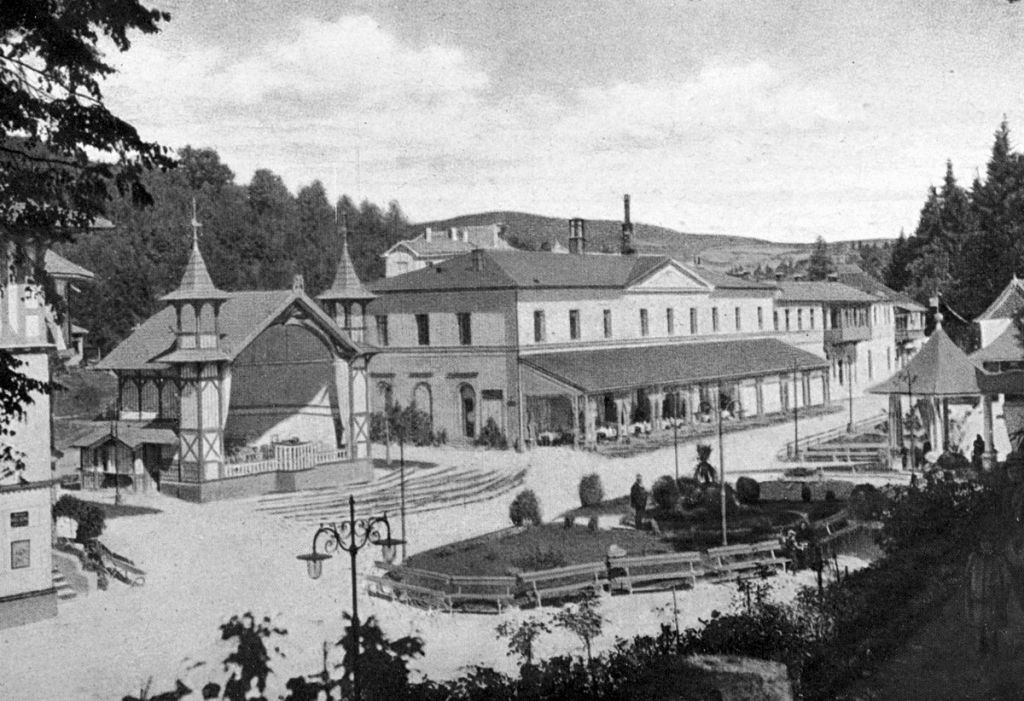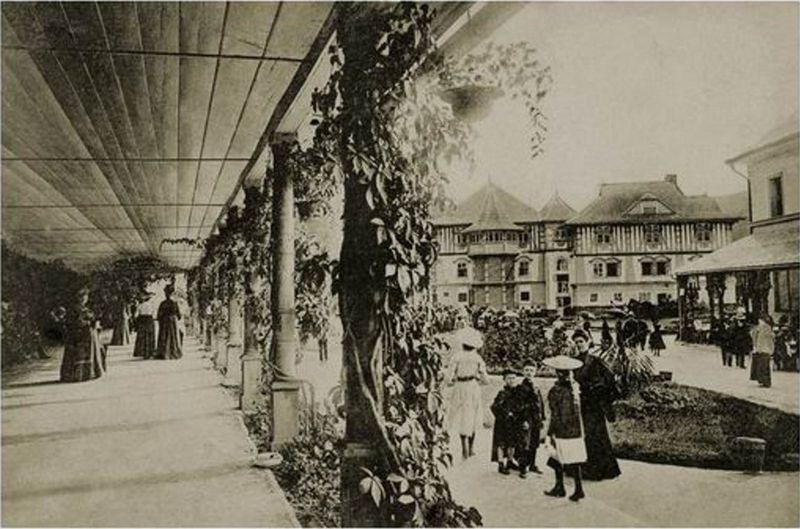 2020
2020
 2020
2020
 2020
2020
 2020
2020
 2020
2020
Luhačovice - The Origins of the Area
Luhačovice - The Origins of the Area
There are several theories about the origin of the town's name. However, it is most commonly believed that the name was derived from the name of the founder of the family. The first mentions of settlement in this area date back to the 7th and 8th centuries, but for centuries the region remained uninhabited. Luhačovice lay on the edge of a border region, and the settlements were frequently plagued by hostile raids. The first written record of Luhačovice dates back to 1412. The sources of livelihood in the hilly area were livestock farming and fruit growing, symbols of which can be found on the town's seal, depicting a branched tree with apples, a ploughshare on the right, and a coulter on the left.
The Serenyi Family in Luhačovice
In 1629, the estate was acquired by Gabriel Serenyi, and it remained in the family until 1945. The Serenyi family was responsible for the greatest development of the area. They recognized the importance of the healing mineral waters and their potential impact on business. Count Ondřej Serenyi had the first healing spring improved and named it Bublavý. It was later renamed and is now known as Amandka. The Serenyi family often named the springs after members of the noble family. Around 1860, another spring was discovered and improved. Initially named Hlavní, it is now one of the most important springs in the spa, known as Vincentka.
Reports of the healing effects of the spring waters spread far and wide, and soon the first guests began to arrive. However, there was a lack of accommodation, dining facilities, and treatment facilities for extended stays. To address this, an inn with several rooms was built near the spring. By the end of the 18th century, construction activity increased, resulting in many new buildings - the Zámeček, Vincenc's House, and the Chapel of St. Elizabeth. The bell on its tower marked the beginning and end of the treatment day. Guests demanded more and more comfort, leading to the gradual expansion of the spa.


The Spa Joint Stock Company
At the end of the 19th century, the spa faced decline. The transformation into a joint-stock company in 1902 was a significant milestone. A railway line from Újezdec u Luhačovic to Luhačovice was built. Otto Serenyi was elected chairman of the board, and Dr. František Veselý became the director of the spa. Everyone strived for maximum development, equipment, and high therapeutic standards.
Dušan Jurkovič
The dream of a modern spa was realized with the help of Slovak architect Dušan Jurkovič. His picturesque works gave Luhačovice its unique character. He honed a sense of environment and understanding of place. His efforts to understand nature and the environment, as well as the people for whom he designed, can be seen in the Jurkovič House (formerly Jan's House) on the Spa Square. His signature style can also be found in the charming Sun Baths, the Jestřabí building, and the Villa Chaloupka.
Important Milestones in the Development of the Town and Surroundings
In 1928, the construction of the Luhačovice Dam was completed. Three years later, the town was electrified. On the Spa Square, the Community House was built, and after World War II, the spa boasted the Great Colonnade. The period during World War II was a time of stagnation for both the town and the rest of the republic. After liberation, a new era of development began for the Luhačovice spa. The Great and Small Colonnades are connected by a hall with the spring Vincentka. The Luhačovice spa currently holds the title of the largest spa in Moravia and the fourth largest in the Czech Republic.



 Čeština
Čeština  Slovenština
Slovenština  Polski
Polski 
